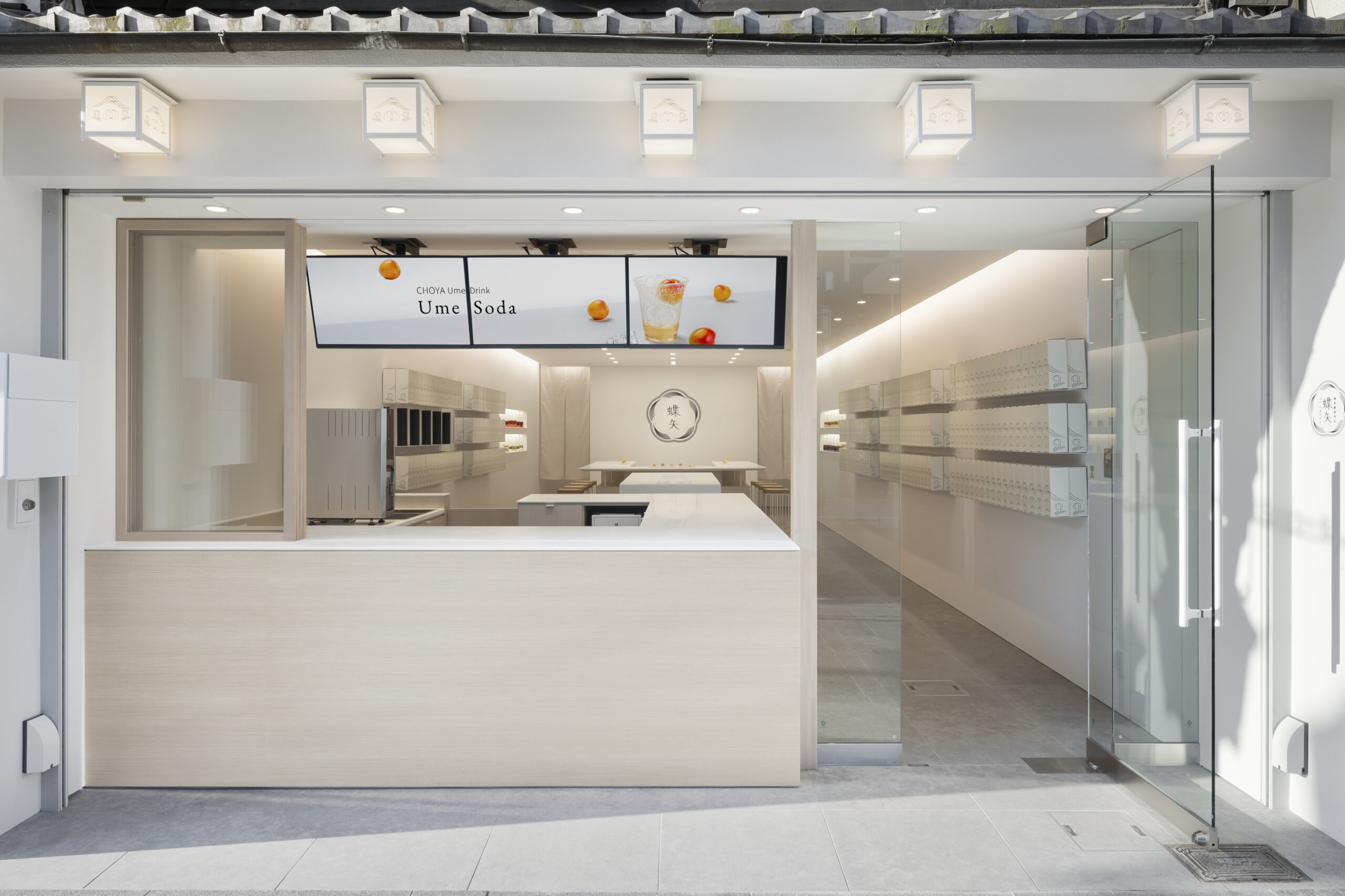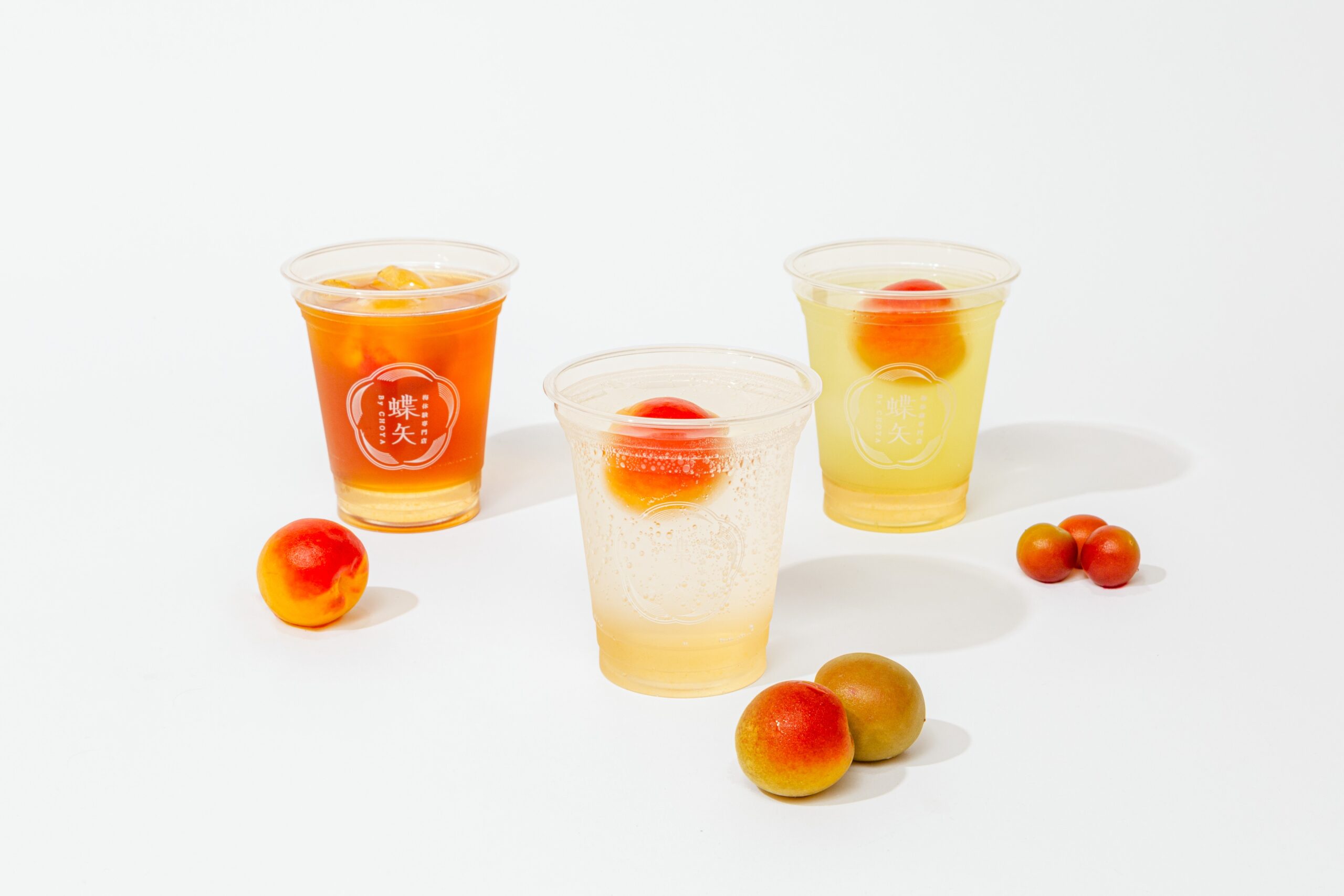“UME” — The Heart of Japan, Shared with the World
The Story of Plum Culture at CHOYA UME STUDIO Kyoto Sanjo
On Kyoto’s historic Sanjo Street, quietly blending into the old townscape, stands CHOYA UME STUDIO Kyoto Sanjo — a place where visitors can craft their very own umeshu and ume syrup. (ume:a plum-like fruit)
But this is more than just a hands-on experience. Within this space lives the spirit of ume, a fruit unique to Japan — a symbol of culture, history, and the passion to share it with the world.

From Wine to Umeshu — The Beginning of CHOYA
The story of CHOYA began in 1914 in Habikino, Osaka, when Juutaro Kondo, a grape farmer, founded a winery.
After studying winemaking in Europe, he was struck by the overwhelming difference in quality between Japanese and European wines.
Realizing that Japan could not compete on the same stage, he decided instead to pursue something uniquely Japanese — and his answer was ume.
In 1959, CHOYA began producing umeshu.
At the time, umeshu was considered a homemade drink rather than a commercial product, and no market existed for it as an industry.
It took more than 20 years of effort to establish umeshu as a recognized product.
Even so, CHOYA never gave up — and by the 1960s, the company had already begun exporting overseas.
Today, CHOYA umeshu is enjoyed in more than 90 countries around the world.
In places where ume is virtually unknown, the word “CHOYA” itself has come to mean “umeshu.”
Umeshu as a Reflection of Japanese Culture
At the heart of CHOYA’s philosophy lies the traditional method of umeshu-making that dates back to the Edo period.
Made only from ume, sugar, and alcohol, CHOYA’s umeshu contains no additives or artificial flavoring.
This simple approach reflects the Japanese spirit of living in harmony with nature and cherishing the changing seasons — a true expression of cultural sensitivity.
One person who embodies this spirit is Mr. Suga, the manager of CHOYA UME STUDIO Kyoto Sanjo and a certified Ume Meister.
Since joining CHOYA after university more than 20 years ago, he has dedicated his career to ume.
After training at CHOYA’s production facilities, he traveled across Japan to visit ume farms and develop recipes that highlight each region’s unique fruit.
Now an expert in ume cultivation, history, production, and tasting, he continues to share the beauty of ume with the world.
“There are about 100 varieties of fruit-bearing ume, and 300 ornamental varieties grown for their blossoms. No two are alike in aroma or flavor — that’s the real charm and depth of ume,” he says.

Confronting the Challenges of a Changing Industry
Through his travels, Mr. Suga became acutely aware of one pressing issue: the lack of successors among ume farmers.
As imitation products using acidulants and flavorings increased, the demand for real ume declined sharply.
With fewer farmers, the traditional skills and knowledge of ume cultivation risked being lost.
“It felt as though Japan’s ume culture itself might disappear,” he recalls.
In response, CHOYA launched a bold new initiative in 2018 — an interactive experience brand called “Choya” (蝶矢).
Here, visitors can create their own original umeshu or ume syrup from over 100 possible combinations.
They select the ume, the type of sugar, and the alcohol, learning through experience.
By touching, smelling, and tasting ume, younger generations reconnect with it — making ume not just “someone else’s tradition,” but “their own culture.”

Connecting Kyoto and the World
CHOYA UME STUDIO Kyoto Sanjo continues this mission in Kyoto — a city where tradition and global culture meet.
The studio offers multilingual guidance in English and Chinese, teaching visitors about the history of ume and the process of umeshu-making through hands-on experiences.
Seeing international guests smile in surprise as they taste ume for the first time — its unique balance of tartness and fragrance — is, for Mr. Suga, the greatest reward.
During the COVID-19 pandemic, when in-person visits dropped to zero, the team quickly launched online classes and at-home umeshu/ume syrup-making kits, ensuring the experience could continue from anywhere.
They also remain deeply connected to the Kyoto community — participating in local festivals, hosting cultural workshops for international students and residents, and collaborating with local guides and merchants.

Dreaming of “UME” as a Universal Word
“One day, I hope that UME will be as universally recognized as MATCHA or YUZU,” says Mr. Suga.
With that dream in mind, CHOYA continues to share the story of ume with patience and pride.
Through each experience at the Kyoto studio, visitors encounter not only the fragrance of ume, but also the essence of Japanese seasons and culture.
And when they return home and sip umeshu again, they remember the time they spent in Kyoto.
CHOYA UME STUDIO Kyoto Sanjo carries Japan’s spirit within a single small fruit — sharing it across generations, and across the world.
<Store Information>
CHOYA UME STUDIO Kyoto-Sanjjo
87 Nakajima-cho, Sanjo-dori Kawaramachi Higashi-iru, Nakagyo-ku, Kyoto 604-8004, Japan
Hours:10 AM - 7 PM

